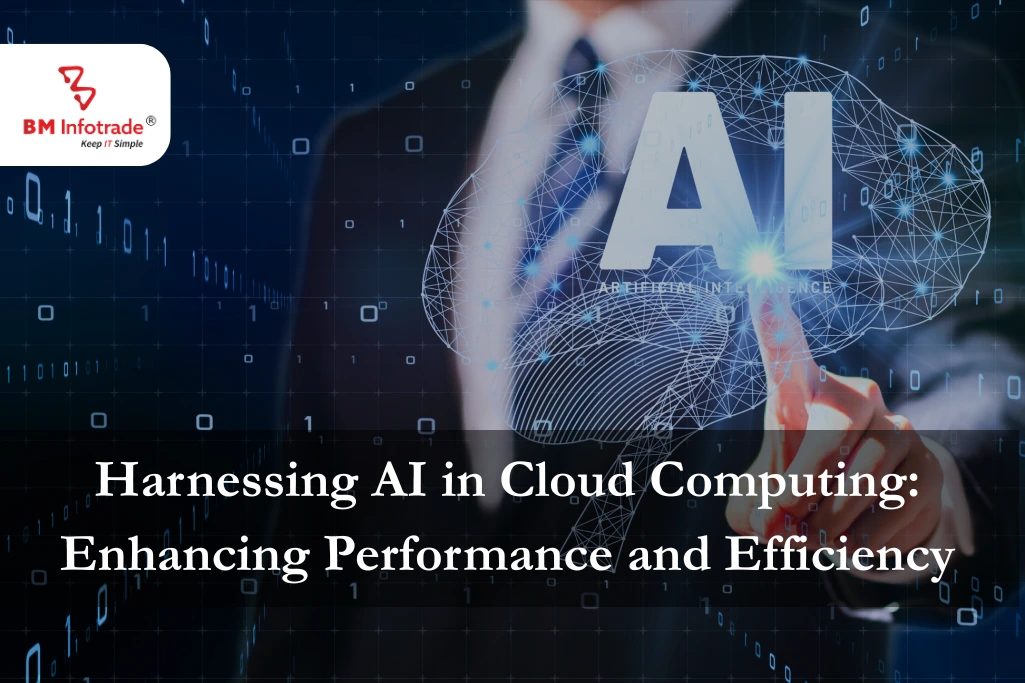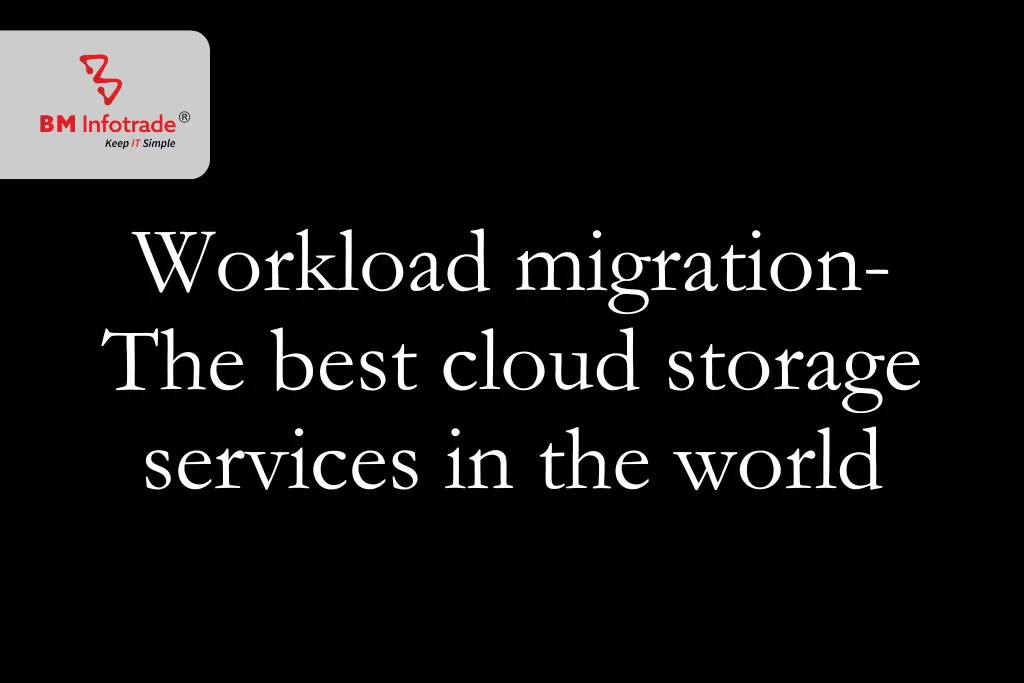Harnessing AI in Cloud Computing: Enhancing Performance and Efficiency
Discover the transformative impact of AI on cloud computing, focusing on performance enhancement, resource management, and security improvements.

Harnessing AI in Cloud Computing: Enhancing Performance and Efficiency
Table of Contents
Today, the IT industry is driven by the two biggest advancements: artificial intelligence (AI) and cloud computing. AI is a technology that copies human intelligence in doing tasks and can be improved as per the information it collects from the environment. Conversely, cloud computing refers to the use of the internet to deliver numerous services, including storage of data, servers, databases, networking, and software. The combination of AI with cloud computing could significantly improve the performance and efficiency of cloud services.
This could be for instance, improving resource allocation by AI-based optimization processes or bettering data management within the cloud, thus enhancing security measures in place. In this regard, this paper focuses on how AI strengthens operational efficiencies while promoting innovation within cloud services. The author argues that artificial intelligence is instrumental in making clouds more resilient, adaptable, and user-centric platforms than before.
The Evolution of Cloud Computing
Cloud-based systems have completely transformed how business is done by enabling organizations to use the internet for accessing computer resources such as servers, storage devices, network gear, or software, among other things, meaning lower operational costs; improved capacity, and better flexibility. Cloud computing as a concept can be traced back to ideas behind time sharing developed along ARPANET starting in the 1960s. Nevertheless, it was in 2006 when there was the establishment of major platforms like Amazon Web Services that we could start talking about what today can be termed as “cloud computing.”
For many years now, advancements in technology have been pushing boundaries for what is achievable with cloud computing. Scalability and efficiency levels in providing cloud services have significantly improved due to developments such as virtualization automation management and service-oriented architectures (SOAs). Recent times have seen the assimilation of artificial intelligence, which is an opening chapter to a new era in clouds. These AI algorithms improve this technology through the automation of complicated cloud processes like resource optimization, thus providing deeper insights into data patterns. This evolution demonstrates a transition towards more intelligent, responsive, and efficient clouds that can support more sophisticated applications and services.
Read More: Why is AI important? AI changes everything
Key Areas of AI Application in Cloud Computing
The combination of AI with cloud computing has brought about revolutionary changes in several areas. Here are the principal areas where AI is deeply felt.
- Data Management: In cloud environments, AI enhances data management significantly through automated storage solutions and smart data processing. Vast amounts of data can be grouped and indexed by AI algorithms, thus enabling faster access and more efficient retrieval of information. Additionally, AI-driven systems can adjust storage needs automatically based on predictions of data usage patterns, which enhances both cost-effectiveness and performance improvement.
- Resource Management: When it comes to resource allocation and utilization in cloud computing, AI stands out. By analyzing real-time resource use data, AI can predict load spikes and allocate additional resources dynamically for maintaining performance. Moreover, predictive maintenance that is powered by AI predicts potential system failures, allowing for preemptive repairs and reducing downtime.
- Security Enhancements: Security is especially important when it comes to cloud computing; hence, Artificial Intelligence is a major contributor to this area. Network traffic can be monitored by an Artificial Intelligence-powered system for unusual behavior and detect potential threats earlier than traditional software-based mechanisms.
- Networking: Artificial intelligence is used to control and manage the flow of data across networks and devices to optimize network traffic. It monitors traffic to identify the most efficient routes for data transfer via intelligent routing algorithms that reduce latency, thereby boosting speed. It is also capable of anticipating bottlenecks and redistributing network loads to maintain service continuity.
Case Studies: AI-Driven Cloud Successes
Several case studies have been used as testimony of the transformational effect of AI on cloud computing by demonstrating how it has led to increased performance and efficiency.
- Automated Resource Scaling in E-commerce: A large e-commerce company made use of AI systems in their cloud resource scaling automation. This involved predictions about higher online traffic during busy shopping times leading to the spontaneous allocation of more resources by automated systems, thus ensuring customer experiences remain uninterrupted without any human intervention; this minimized downtime and optimized operational costs through real-time reshuffling of resources
- AI in Healthcare Data Management: An AI-sustained healthcare provider with a big data storage cloud server. The quick retrieval of data using AI tools could increase the speed of decision-making for healthcare practitioners, which would be more accurate. This means that medical research and patient care services were made more efficient through the system’s capability to study and adjust itself to new data patterns.
- Enhanced Cybersecurity for Financial Services: A financial services company that has combined AI with its cloud infrastructure to strengthen its security systems. The platform, powered by AI, was constantly observing network traffic and user activities to identify and neutralize potential threats before they could become harmful. By doing so, not only did this prevention approach protect sensitive financial information, but it also complied with strict regulatory laws.
- Optimized Energy Consumption: For instance, energy use analysis was done by an artificial intelligence system that enabled automatic process adjustment such as cutting waste, hence reducing energy costs, especially within the company’s operations where this was most important; it implemented AI on its cloud-based processing units.
Read More: E-Commerce and E-Business - A Comparative Analysis
Challenges and Limitations
However, integrating AI into cloud computing has its own challenges and limitations that must be resolved to enable it to reach its full potential.
- Technical Challenges: Incorporating AI into pre-existing cloud infrastructures can be hard and expensive. These involve requirements of highly performing hardware to support AI algorithms, difficulties in retrofitting AI on the current systems, as well as a constant need for updating and maintaining AI models, ensuring their adaptation to new data and changing circumstances.
- Ethical and Privacy Concerns: In cloud computing, Artificial intelligence systems have serious ethical issues that emerge from data handling and decision-making processes. There is a prospect of prejudice with AI algorithms that could lead to unfair results or even discrimination. Additionally, mismanaged AI platforms may contravene privacy standards if they process copious quantities of personal data.
- Scalability Issues: Although artificial intelligence can optimize resource utilization in the cloud environment, scaling these solutions for larger or quickly expanding systems proves difficult. Preparing as well as investing heavily in how AI-driven improvements will scale well with the infrastructure is paramount.
- Cost Implications: Typically, artificial intelligence (AI) technologies and expertise are accompanied by huge capital investments. It is an expensive venture for small and medium-sized enterprises that would like to leverage the advantages of AI in cloud computing across different sections of the economy.
- Regulatory and compliance risks: The use of AI as well as cloud technology is subjected to various regulations as they become more complex over time. For this reason, businesses must cope with industry-specific regulations and regional legislation that add complexity to the deployment of AIs in a cloud environment.
The Future of AI in Cloud Computing
In the future, AI’s convergence with cloud-based services is expected to lead to further radical shifts in both ICT and business practices. This could be explained by several major trends that will shape this landscape:
- Advances in Machine Learning & Deep Learning: The consistent improvement of machine learning and deep learning technologies will increase the capabilities for artificial intelligence within clouds, enabling better data analysis, more accurate prediction models, and improved automation algorithms.
- AI-as-a-Service: A Major Concern for Cloud Providers: This would enable big and small companies to use AI tools without setting up expensive local AI infrastructure. These are some of the reasons why this trend is called the democratization of AI. It will enable more businesses to take advantage of advanced analytics, machine learning models, and cognitive services to improve their operations.
- Edge computing and AI: The combination of artificial intelligence (AI) with edge computing — a lobe processing data closer to its origin point — will reduce latencies in cloud services and improve reaction times. As well, this is vital for real-time decision-making applications such as self-driving cars or IoT.
- Autonomous cloud management: In the future, it is projected that cloud platforms will become more autonomous with AI systems handling most of the routine management tasks, including data backups, security surveillance, and system upgrades. It would result in less human intervention being required, thereby reducing operational costs while raising service dependability.
- Ethical AI and Regulation Compliance: The increased use of artificial intelligence in cloud computing will require the development of ethical AI that respects user privacy and is devoid of prejudices. Also, regulations will change to ensure that the AI systems are traceable and answerable to international data protection laws.
- Hybrid Cloud environments: The rise of Artificial Intelligence technologies able to effectively handle resources across differing platforms will fasten the movement toward mixed-cloud structures that marry private with public cloud infrastructures
Read More: How AI is Changing Business Processes
Conclusion
Including AI into cloud computing is a significant landmark in technology development because it leads to unprecedented improvement in performance and efficiency. This combination can be described as when the processes are automated and optimized, innovative solutions are encouraged across various industries. Nonetheless, this route has hurdles like technical complexities, ethical issues, scalability issues, and costs associated with it.
Constant investment in research, well-thought-out policymaking, and cooperation between technology providers and business users are necessary for these benefits to be achieved. As we move on, there is enormous potential for AI to change cloud computing into a more adaptive, secure, and efficient platform; therefore, cloud services that meet the needs of businesses and consumers better will be realized soon.







Anshul Goyal
Group BDM at B M Infotrade | 11+ years Experience | Business Consultancy | Providing solutions in Cyber Security, Data Analytics, Cloud Computing, Digitization, Data and AI | IT Sales Leader